Overhauling the Mumbai Suburban Railway System

The sad state of the Mumbai locals is well documented. With derailments, delays and cancelations almost every other day, the system is stretched beyond its limits and is in danger of breaking down completely. And now things have come to a head with people fed up of the system took to the streets in the “Diva Local Riots“. It is outrageous that despite being among the World’s largest mass transit systems, the Mumbai local services are a creaking system on both Central and Western Railways, seemingly running “Ram Bharose” or by God’s grace. What can be done to improve this situation? It is ridiculously amazing that the Indian Railways, the colossus with the most ginormously enduring role to play in the very survival of this nation is just another centrally controlled governmental department which by far has been spectacularly incapable of providing the citizens of India with safe, modern and fast transportation options that they not only deserve but so badly need. Bigger than the entire Swiss train system in terms of passengers transported in a year, the Mumbai locals would’ve been a separate company if it were in any other country. But here, forget a company, it is not even a separate corporation, department, sub-department, zone or even division. Yes, the Mumbai Rail Vikas Corporation (MRVC) does exist but is mostly only a toothless entity residing on paper. A complete overhaul and policy change is required from top down if we are to prevent the Railways and Mumbai collapsing under their own weight.
Some Facts About Mumbai Suburban Railway
How Mumbai Railways are divided makes little sense. Tracks in the same city are owned by two railway zones, administrative divisions of the Indian Railways. The Western Railway (WR) runs the “Western” Churchgate – Dadar – Andheri – Virar line and Central Railway (CR) runs the Central CST – Dadar – Thane – Kalyan – Igatpuri and the Harbor and Panvel lines. Both have their own terminals, stations and administrative processes and like boys and girls growing up in India, trains from either zones do not intermix, resulting in CR locals not running on Western lines and vice versa (except on the Andheri – Mahim stretch). Hence there is no train from Mumbai Central to Panvel or from Thane to Borivali or from CST to Virar. For most Mumbaikars the locals are a way of life, for which they pay way too less. The reality is that Suburban operations are a drag on the Indian Railways. Out of the 8.421 billion (842 crore) total passengers Indian Railways carried in 2012-13, 4.477 billion (447.7 crore) or 53% were suburban passengers! However, these 53% passengers contributed only Rs.2010 Crore or just 6.42% of all IR passenger revenue in 2012-13 (source). Not just Mumbai but all suburban systems need to be delinked from IR for better focus on them and also to rid Indian Railways of all the overheads.
Central and Western Railways are two large zones whose Jurisdictions extend as far as Nagpur in the East for CR (all of Maharashtra) and as far as Ratlam in the north for WR (all of Gujarat). They have long distance express trains and other trains to operate and are virtually overburdened having to handle another system which is as big as the rest of the zone itself! Mumbai locals run by both CR and WR share tracks, stations, platforms, timetables and administrative systems with long-distance express trains controlled by various zonal railways which are in turn controlled by the Rail Bhavan in Delhi. Even the hell created by people trying to change trains at Dadar where both CR and WR lines converge is the creation of this bureaucratic stranglehold.
The main problem with Mumbai Suburban Railway system is the same that holds back India from achieving its potential: disinterested ruling class, bureaucracy and outdated policies and administrative rules scripted by the British a century back. Indian Railways is just way too centralized and top-heavy that individual managers have virtually no power to improve anything. It looks like everything from fixing a leaking tap to adding extra trains/coaches to clear rush requires a ministerial/railway board sign off from Delhi! Take the sad and horrific incident where a 16 year old girl lost her arms when she fell into the space between the train and ill-maintained platform. And the platforms was (is) ill-maintained because even if Central Railway wanted to repair it, the process would consist of a complex system of tenders and approvals, all which would have to come from the Rail Bhavan in Delhi. And as per the Indian Railways, Mumbai’s suburban local trains are just high-preference MEMU services or just ordinary passenger trains, one among thousands of other Indian Railway (which itself is just a government department) trains with no special privileges, priorities or decision making powers. Same goes for the Kolkata, Chennai and other suburban railway systems.
The levels of centralization and complicated labyrinthine bureaucracy in Indian Railways is mind blowing. Check this post by Prof. Bibek Debroy for details. Decentralization is the only way to solve these issues, starting from empowering station masters to really “control” their stations. Currently even that lies with Delhi. However, this creation of an independent, separate system for the Mumbai locals cannot be achieved within the existing policy framework of the Indian Railways which stops at zoning. Setting up a separate railway zone for Mumbai or even the Mumbai Locals alone (like Kolkata Metro) will do no good because it it just means changing administrative boundaries and not really solving our problem. The new zone though it can focus on Mumbai alone and will have greater administrative independence, it will still be controlled by the Rail Bhavan and would still be mired in the tangles of bureaucratic redtape. What we need is something completely new.
Greater Mumbai Suburban Railway Corporation (PSU) (GMSRC)
A public sector unit (corporation) owned by the government of India with majority stake just like the Konkan Railway, which will be entrusted in running the Mumbai locals as a single system, thereby eliminating the present Western/Central methods of working. The jurisdictional limits of the corporation will be Dahanu Road / Kasara / Khopoli / Panvel (all included) which will include current Western, Central, Harbor, Tran-Harbor and Navi-Mumbai/CBD/Uran lines and all the stations, tracks and infra used by these local systems.
- The corporation should be given complete administrative independence on all matters including operations and various initiatives.
- Indian Railways should not meddle in the affairs of the corporations except when it comes to capital, national security issues, big-ticket acquisitions, technical integration, scheduling, ticketing/billing systems etc.
- The GMSRC should be allowed to raise capital on its own without any interference from various quarters, including by selling shares to the public.
- The MRVC should be continued to be entrusted with maintenance of tracks, stations etc and it should be merged with the corporation.
- Revamp everything: from signages, timetables, operating rules, rakes, stations etc. Empower local managers (station masters etc) to make decisions as they see fit for the best.
- MUTP should continue with its push on infrastructure development.
- There must not be any kind of political intervention in the corporation.
Though many corporations are sick and failing (Air India being one of them), there are many shining jewels among them like IOC, ONGC, SBI, SAIL, NTPC, GAIL, LIC, BHEL etc. Governance, revenue management and share holding patters often are among the most defining factors that determine whether a PSU is profitable or in this case, successful or not. GMSRC should ideally not be a for-profit corporation since the very survival of the city of Mumbai depends upon it. This way, the Mumbai locals will also cease to be a drain on the Indian Railways.
Privatization (of various kinds)
Privatization always sounds attractive and is considered as the one-stop cure to all of India’s ills by many. This is in fact true in many sectors but is not even an option in the case of suburban mass-transport trains like the one in Mumbai. Most importantly, it makes no business sense because with the current fare structures the line will deliver only huge losses to any investor. For any profit to be made, fares on Mumbai locals have to be increased atleast ten fold. In addition to that, the central nerves of the city are too sensitive to be entrusted to for-profit private players. With a financially poor user population and corruptible and toothless enforcers, India does not seem to be matured enough to allow private railways to operate. Even if private players were to be allowed to run their own trains on existing tracks with higher fares, there would be no way to put checks and controls on who is boarding these trains and whether they have taken tickets as they have to utilize the same stations. However, private players can be allowed to build their own tracks and run their own (expensive) trains, if they can finds the land to do so. But this experiment has flopped in many countries like the UK which is planning to re-nationalize its privatized mass-transit options as the general public is fed up with too-high prices and fragmented services.
Think Beyond Just the Locals. Think Whole of Mumbai!
Take a look at that word: Fragmented. If there is anything that describes Mumbai’s and India’s public transportation system, this is it. Suburban, intercity and long distance train services are run by Central and Western Railways as two separate systems, a division of BEST runs the BEST City Bus services (Govt) (and a ferry too), Metro rail is operated by MMOPL (Pvt. Ltd company), Monorail is operated by MMRDA (Govt.) and MSRTC (Govt) and various private operators run intra and interstate long distance bus services. And there is no integration or co-ordination between any of these agencies. Each one operates services as they like and feel, oblivious of any of the other services. While this is great for station-to-station services, it totally sucks when it comes to end-to-end connectivity. What Mumbai needs is an integrated transportation solution, maybe even one with a single ticketing system, where one can probably take the bus from Colaba depot to CST, CR train from CST to Ghatkopar and the Metro from Ghatkopar to Sakinaka, or take the WR train from Virar to Andheri and Metro from Andheri to Ghatkopar, all on a single ticket that can be purchased from the originating station.
What we need to think is big and as a whole picture, and not compartmentalized, to make public transport the easiest option of getting around. Timetables, connections and stopping points should be created and integrated as such to ensure maximum convenience and seamless connectivity by the way of multimodal transport options enabling minimum wastage of time while changing transport modes. As much as possible all interchange stations should share all transport modes in the same building, or atleast should have walkways (overbridges/skywalks) connecting them aboveground so that people don’t have to cross roads. Allow buses to have stops near to station entrances (Salem Jn). Also, make all timetables cyclical (one train arrives every X minutes instead of the haphazard timings as of now) so that people can plan their commutes well. The Mumbai Metro is a good example for such inter-connectivity. The model for this system can be the City of Zurich’s ZVV, which is the apex transport body of the city that plans and decides routes, creates the timetable, co-ordinates, finances, markets and controls all the transport service providers (operators) in the city like SBB (trains), SZU (trains), VBZ (Bus), POST (Bus) and so on. In this way, operators can still operate all services on their own under the command of the ZVV while the city gets a fantastic, seamlessly interconnected, multimodal network.
Mumbai desperately needs an overhaul of its public transportation system. No, more roads and more cars is out of the question. What we see right now should be the maximum. Now, Mumbai should first get the GMSRC, then the BEST services should be spun off as a separate corporation. A GMTC (Greater Mumbai Transit Corporation) should then be commissioned as the apex body that co-ordinates services between Indian Railways, GMSRC, BEST, Metro, Mono, MSRTC etc. Creating and maintaining infrastructure such as bus stops, interchange stations (except railway stations), route and sign boards, lighting etc, all ticketing services and planning and deciding on routes and marketing should lie with the GMTC while the individual corporations can run their services using their equipment and staff but will have to report to the GMTC. Incorporating all these services into one tight bundle into one multimodal transportation and operation system is what will revolutionize Mumbai. Because what Mumbai needs right now is a transport revolution.
Hoping that things will change. It is high time now.




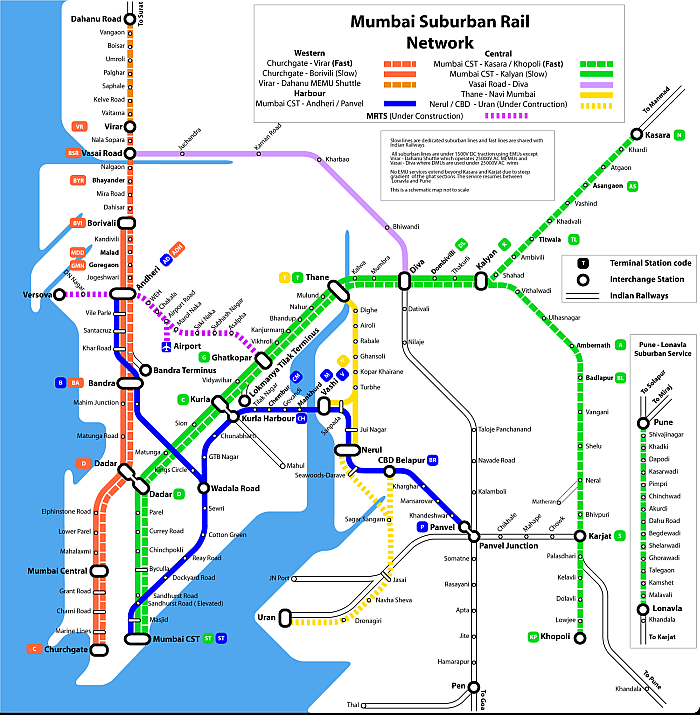

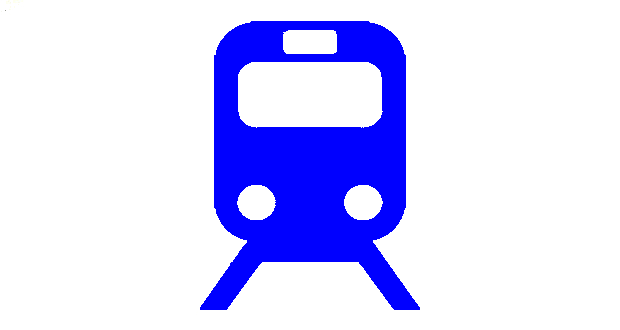
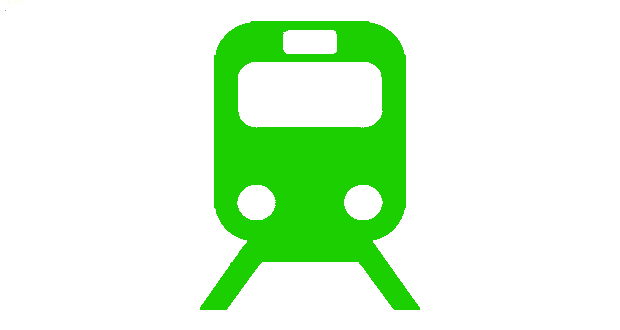
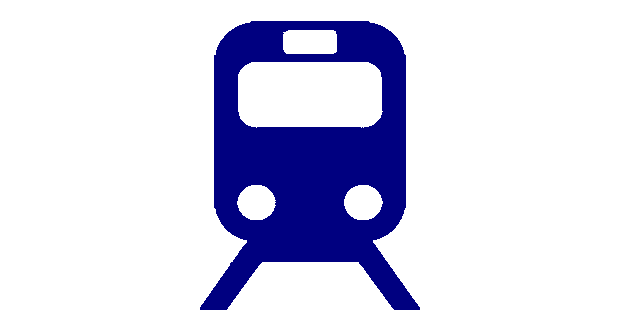
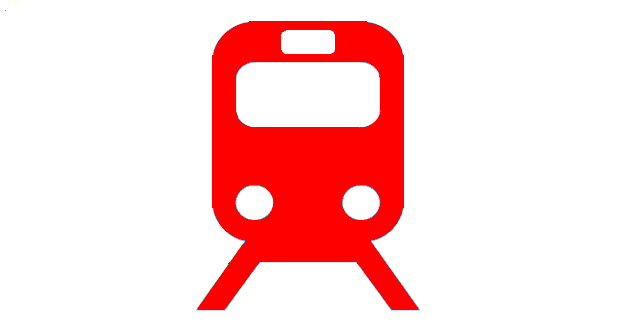
There’s a lot in this article that makes sense, notably decentralisation of Railways. Too much control is in the hands of Rail Bhavan, because of which needs of individual zones are not recognised, and this is one of them.
Operations of the suburban railway system of not just Mumbai, but every other city, need to be de-linked from national railway operations, and be handled by an independent body, combined with that city’s bus/metro/mono/tram services. Rail Bhavan in Delhi has no clue or understanding of Mumbai’s suburban rail needs. I’m not sure they’re even bothered about those of Delhi/NCR. In fact, even the various Railway Zones in India need to be given complete authority to procure and run trains within their zones. Rail Bhavan should stick to running Rajdhanis, Garib Raths, Durontos and other long-distance services.
One of the pressing needs of Mumbai’s suburban railway is the option to run double-decker trains. The ridership on the floor of each coach can then be split into two, which can reduce the crowds per floor. Moreover, complete air-conditioning and automatic doors are the way ahead for the city’s suburbans, but if this also needs approval from Rail Bhavan, the MRVC or proposed GMSRC definitely needs more autonomy, and heritage lovers need to know where to get off.
Yes, a common ticketing solution is definitely needed. However, there’s another problem with Mumbai’s suburban railway in particular, and public transport in general. The rail network runs only north-south, while east-west routes are used by buses. Trains have a clear advantage over buses- they do not get stuck in traffic jams. What Mumbai needs are a set of east-west rail routes, be it suburban or metro or monorail. Ghatkopar-Andheri was a nightmare of a trip earlier- the link road connecting them was perpetually clogged, so taking a train was faster, even in a V-shape with a cross-over. The Metro has proved to be a game-changer, with high-speed east-west connectivity. BEST has ceased to be a viable option for fast travel within the city, not just with their uncomfortable non-AC buses, but also their tendency to operate in slow, jam-packed routes. Metro is the only way forward, because it can operate overhead and underground, and needs support.
At least Mumbai has a suburban rail/public transit network. Most Indian cities, with plenty of tourist destinations in and around them, don’t. Even this much would be a great thing for them!